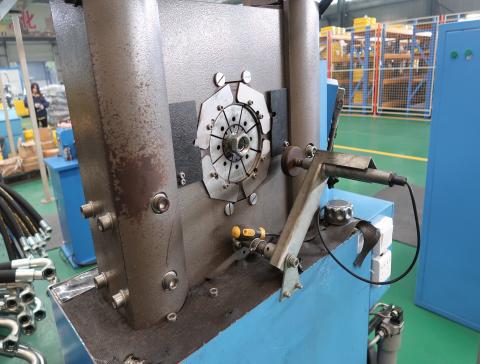Specifications for nylon hose
Consider the working pressure rating, size and weight of large-diameter rubber hoses when choosing one. Also, ensure that the hose is made from a material that is highly resistant to kinks. The layline of the hose should include information about the manufacturer.
There are many options when it comes to large-diameter rubber hoses. The standard diameter is 5/8" but smaller diameters can be used for light hand watering. A 5/8" hose is required for most home-based applications. A 5/8" hose can deliver up to twice the water that a 1/2" hose can. However, a 3/4" hose is typically reserved for commercial uses and can deliver as much as three times as much water.
The hose material can be made from different synthetic materials. One of these is nitrile which is extremely flexible and resilient at low temperatures. This type of material features a smooth, high-quality lining. It is also often coated with abrasion resistant compounds.
It is also important to consider the hose's inside diameter. If the inside diameter is too small, excessive flow can occur and damage the hose. The excessive flow can also cause clogging and high system pressures, which can lead the hose to fail. Larger hoses require a larger inner diameter.
Features of nylon hose
Nylon hose with large diameter is versatile and has many advantages. It is strong, flexible, and resistant to high temperatures and pressures. This material is commonly used in pneumatic hose applications. Contact a professional manufacturer for more information about this versatile material. This article outlines some of the key characteristics of this material.
The hose is available in a variety of sizes, including 3/4-in. Depending on the diameter, it may include a nylon braid to increase its strength and durability. It can also be made of heavy rubber or polyurethane. It can be used in a variety of industries, including factories that transport their products.
Nylon hose's resistance to abrasion is another important characteristic. It can withstand the wear and tear caused by gasoline and motor oil. It is also highly resistant to chemicals. It can withstand erosion by gasoline and other strong acids. It is also weather- and odor-resistant. Its smooth surface makes it easier to handle and bend. A large-diameter nylon tube can be very useful in many different applications.
Nylon tubing is available in many sizes and colors. Nylon 6 is a monomer that contains six carbon atoms. Nylon 66 is made of two monomers. Nylon 11 and 12 are available in various colors.
There are advantages and disadvantages to nylon hose
Nylon hoses have two major advantages over other types: strength and toughness. It has high tensile strength and good compression strength. It is also resistant to heat, solvents, weak acids, and heat. It also has good antimicrobial and anti-mold properties. Nylon has excellent electrical properties, including high volume resistance as well as resistance to breakdown voltage. Nylon hoses are also good for power frequency insulation, particularly in a dry environment. Nylon hoses are easy-to-form with a quick solidification point and a short setting time. This results in greater production efficiency.
Depending on the application, rubber-cored hoses are a cost-effective alternative to thermoplastic hoses. Rubber-cored hoses can withstand higher temperatures and are flexible, but they are not suitable for applications below 500 psi. The hose's size is as important as its core material. There are two types of hose core constructions: smooth bore (SB) or convoluted bore [B].
Choosing a hose with good strength and resilience is crucial for a fire department. You should also consider the material's durability. Although a hose with a greater resistance to abrasion will last longer, it may not provide the same ventilation effect.

